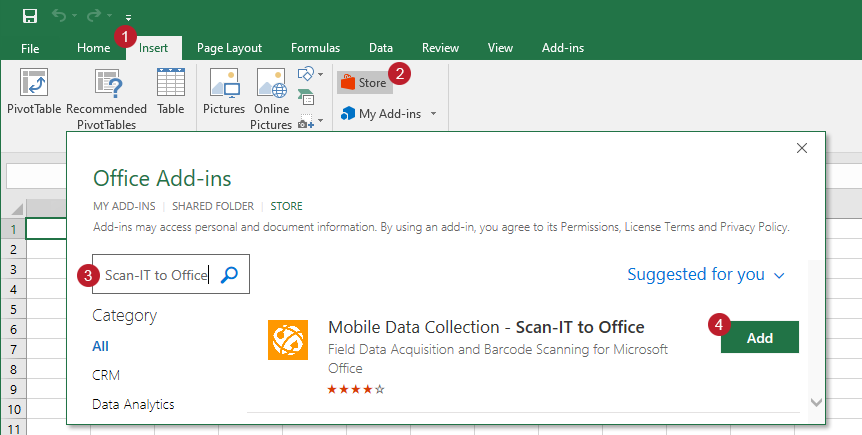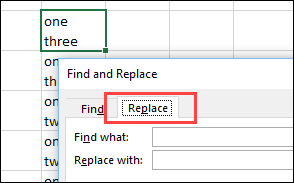

- #EXCEL FOR OSX INSERT LF IN CELL HOW TO#
- #EXCEL FOR OSX INSERT LF IN CELL CODE#
Should you need them, here are three special characters that you can refer to in Power Query: I’m sure it won’t be long before they give us an easier to use/more discoverable mechanism to make this work. The good news is that it can be done, and the better news is that Power Query is constantly being updated. The bad news is that currently it’s a bit painful to do this.
#EXCEL FOR OSX INSERT LF IN CELL CODE#
Remove the code that is telling which columns to importĪnd second, we need to remove this completely:. Undo the escaping that Power Query did on our #(lf) entry, and. To correct this code, we need to modify the formula in the formula bar to do two things: Notice how we have two columns with nothing in the second. It assumes that this is special text, so escapes it to text, and appends some commands that actually mess you up: Unfortunately, there is no line break or carriage return option in the dialog, which means that you’ll need to pick “Custom”, and enter the special character for a Line Feed:Įven worse, with entering this, Power Query is overly aggressive when you click OK. Right click the Text column –> Split Column –> By Delimiter. But if you select the cell, you’ll see in the preview window that all the data is there: Select the data –> create new query –> From TableĪt this point, you’d certainly be forgiven for thinking that only the first line was pulled in. In cell A3 type “This” –> Alt + Enter –> “is” –> Alt + Enter –> “text” –> EnterĪnd now we’ll go and pull it in to Power Query:. In cell A2, type “Text” and press Enter. To start with, let’s set up some simple data: Today’s post explores how we can split by line breaks in order to break these types of cell contents into multiple columns. The target cell text will still contain the line feed characters, but Excel will display everything on a single line, spilling over into empty cells to the.6 answers 6 votes: At the end of the text press and hold ALT and ENTER simultaneously.  Make sure the Wrap Text check box is selected.Īfter setting up the format in this manner, you will need to adjust the row height of the formatted cells so that the entire two lines of the date will display.Some more savvy Excel users know that you can break text onto multiple lines in a cell by pressing Alt+Enter mid entry. The Alignment tab of the Format Cells dialog box. It is not really gone it has just moved up above what can be displayed in the Type box. This enters the line feed character, and it looks like the portion of the format you typed in step 5 disappears.
Make sure the Wrap Text check box is selected.Īfter setting up the format in this manner, you will need to adjust the row height of the formatted cells so that the entire two lines of the date will display.Some more savvy Excel users know that you can break text onto multiple lines in a cell by pressing Alt+Enter mid entry. The Alignment tab of the Format Cells dialog box. It is not really gone it has just moved up above what can be displayed in the Type box. This enters the line feed character, and it looks like the portion of the format you typed in step 5 disappears. 
Hold down the Alt key while you press 0010 on the numeric keypad.The Number tab of the Format Cells dialog box. Excel displays the Number tab of the Format Cells dialog box. The solution is to use the numeric keypad to enter the desired line break in the format. Excel won't let you press Alt+Enter between them, which is what you normally do to add a line break. Most of this can be done by the custom format "ddd d mmmm", but you need to figure out a way to add a line break between the "d" and the "mmmm". Using such a format, a date would appear in a single cell in this manner: What if you want to create a two-line custom format, however? For instance, you may want to format a date so that the abbreviated day of the week and day of the month is on the first line, followed by the unabbreviated name of the month on the second line.
#EXCEL FOR OSX INSERT LF IN CELL HOW TO#
(Custom formats and how to set them up has been discussed fully in other issues of ExcelTips.) Most custom formats are straightforward and easy to figure out, once you understand how custom formats work. Excel is quite flexible in how it allows you to set up custom formats for displaying all sorts of values.







 0 kommentar(er)
0 kommentar(er)
